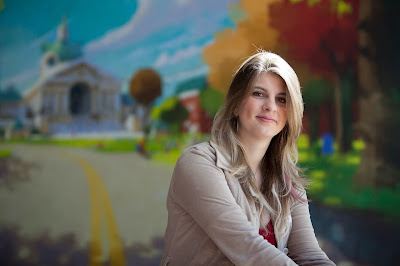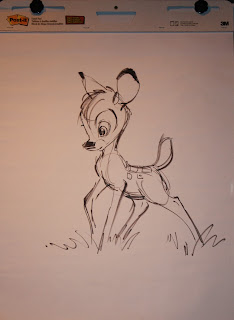Intern Friday features interviews with former Interns at animation, film, and video game studios. Today we bring you Eliza Ryus former intern at Fonco Creative Services and now Lead Puppet Maker and Costumer. Enjoy and stay tuned for future Intern Friday Interviews!
What is your current job title and where do you work?
I'm the Lead puppet maker and costumer at Fonco Creative
Services.
What does your job entail?
I make stopmotion and live action puppets and costumes for
animated shorts, commercials, and trailers.
The cartoons I watched as a child. I saw Looney Tunes when I
was 5 and decided that's what I wanted to do. Of course that's changed a lot in
the years since but still in the same vein.
Where did you study?
I received my BFA at The School of the Art Institute of
Chicago and my MFA at Academy of Art University in San Francisco.
Why did you choose the studio to apply for the internship?
I actually fell into my internship with Margo Mitchell Media
and Marvel Comics by being friends with the guy who had it before me.
When he graduated, he recommended me for the job. My internship at Fonco started because I was introduced to the head of the studio by my professor and my mentor recommended me for the job.
When he graduated, he recommended me for the job. My internship at Fonco started because I was introduced to the head of the studio by my professor and my mentor recommended me for the job.
What did you submit for your portfolio and how did you
prepare for the submission?
For Marvel and MMM I was working directly for a freelance
artist and helping with Marvel book pages so I went to his studio and showed
him some work on a slide show on my laptop (2007).
When I applied for Fo I had a website he could look at.
Nowadays I keep my work on an iPad.
What do you believe separated you from others who were also
applying for the internship?
Being personable. I believe being friendly and easy to work
with has made a large difference did me. I make friends easily and that has
helped me more than anything else.
What was the interview process like for the internship?
Very casual on both counts. We sat and talked about movies
and comics we were into, art and making stuff then I was offered the job.
Pretty simple considering how nervous I was.
What department did you intern in and what specific tasks
did you accomplish as an intern?
I interned for a colorist so I did the flat color layouts
for a little throwback indie comic for Marvel. So a lot of Photoshop work.
At Fonco it's always something new. When I was an intern, I
was put to work making puppets for our original content and every puppet was
completely different than the last so I had to wrangle it a totally new way
with new materials every time.
How did the internship prepare you for your current career?
At MMM working on a Marvel book I learned a lot about the
pipeline and deadlines and efficiency.
At Fonco I was an intern for my first year and I worked
really hard, always tackled a challenge with a clear head and got along with
everyone I worked with and that slowly got a real lead position there.
What is your opinion on paid versus unpaid internships?
I think internships should be paid. I worked for years as an
intern at many places. We worked overtime a lot and were usually given the
hardest tasks just because we were interns and “needed to learn the ropes.” I
was always glad to have the experience, but I was still a student and working
40 hour weeks unpaid and because it's such an important opportunity you can't
take the time off to get a second job to pay your rent. Also I believe most
employers are unaware that in order to get the 'class credit' interns are paid
in, students still have to pay the same amount as they would for a regular
class. So essentially interns pay a couple thousand dollars to work for a
company that can't even cover their rent. So yes, I believe they should be
paid.
What advice do you have for aspiring artists who want to
intern at a studio?
It's the best way to get a job after school, but it doesn't
always pan out. Sometimes you really are just free labor and if you're an
unpaid intern, do one year, do it well, get the credit and resume line and move
on. If there isn't a job at the end of that year, hop from company to company.
If you're going to be unpaid, get as many good connections as you can at
different places, be friendly and work hard but don't get taken advantage of.
Knowing a lot of people in other places is always helpful and they usually know
each other and can recommend you if a paid job pops up somewhere. You want to
be fondly remembered.
Thank you Eliza for the interview! Check out more of Eliza's work at:
And for more info on Women in Animation San Francisco visit our Facebook Page at:
https://www.facebook.com/wiasf
and Twitter at:
https://twitter.com/WIASanFrancisco
https://www.facebook.com/wiasf
and Twitter at:
https://twitter.com/WIASanFrancisco

























